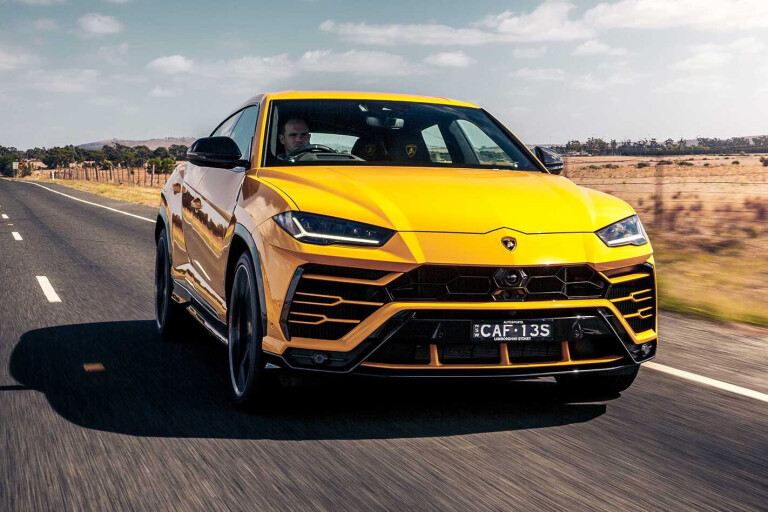
You probably already have an opinion on the 2019 Lamborghini Urus, it’s not a machine that invites ambivalence or fence-sitting.
Its looks, its engine, its underpinnings, its very existence is contentious, but it’s doing what is required of it: drawing a new type of buyer into Lamborghini showrooms. Sant’Agata expects its sales to double, both globally and locally, off the back of the Urus which will generate crucial cash to develop its next-generation of super sports cars.
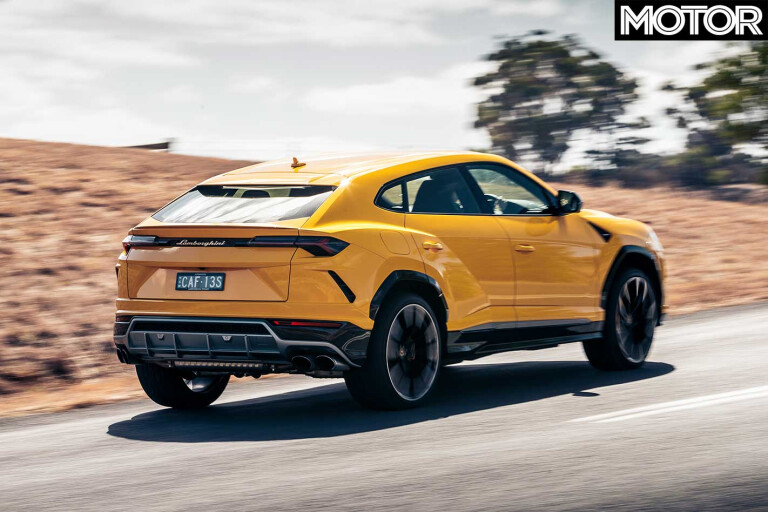
Lamborghini has prior off-road form, but re-imagining the rugged LM002 wasn’t going to cut it. According to its maker, the Urus is the world’s first SSUV – Super Sports Utility Vehicle – thanks to the “best power-to-weight ratio in the entire SUV segment” and “best-in-class driving dynamics”. We’ll get to that, but let’s start with the styling.
Design is purely subjective, but the Urus certainly makes a statement. What that statement is will depend on the observer, but ready yourself for constant “is that a Lamborghini four-wheel drive?” enquiries.
To our eyes it’s a very colour sensitive shape; the difference in desirability and impact between white with standard 21-inch rims and a bold colour with the optional 23s such as our ‘Giallo Auge’ test car is marked. Yes, 23-inch rims.
The reason such gargantuan wheels are required to balance the shape is because the Urus itself is enormous. It’s as long as an S-Class and as wide as an Aventador with a wheelbase to rival the dearly departed Holden Caprice.

The upside of its vast girth is plentiful interior space; my 180cm frame has ample head, elbow, leg and knee room in the rear. Combine this with a massive 616L boot (a Toyota Kluger offers 529L) and the Urus has family duties covered.
Especially as it’s a remarkably comfortable car. Even with wheels the size of planets and low-profile rubber (285/35 front; 325/30 rear) the ride is truly excellent. Whether soaking up pockmarked suburban streets or serenely smothering highway undulations, the combination of adaptive dampers and active anti-roll bars make the Urus a very relaxing way to travel long distances, not an adjective traditionally associated with Lamborghini. With the ‘ANIMA’ drive mode set to ‘Strada’ (street) the steering is light, the engine muffled and the Urus drives as easily as an Audi Q8.
Such a case of mistaken identity would be easy to understand as much of the Urus’s switchgear is lifted from its Ingolstadt sibling. Does it matter that so many bits – steering wheel, infotainment screens, window switches, fuel/temperature gauges, indicator/wiper stalks and more – are shared with more prosaic models? Perhaps the more relevant question is: will any Lamborghini buyer know or care? Doubtful. It looks good and works well, end of story. Less successful is Lamborghini’s addition of the barnacles installed at the base of the climate control touchscreen.

The left one cycles through the six drive modes – Strada, Sport, Corsa (race), Sabbia (sand), Terra (off road) and Neve (snow) – the middle section houses the fighter jet-style start button and gearbox controls and the right one allows the adjustment and activation of ‘Ego’ mode, a saved preference of steering, drive and damper settings. It all works well enough but looks unsightly and takes up an unnecessary amount of space for simple functions.
Furthermore, there are ergonomic oversights: you can only cycle through the drive modes one way (or hold the lever to return to Strada); if you want to return to Sport from Corsa you must cycle through every mode. Likewise, drive is engaged by the left-hand paddle rather than a button; not the end of the world, but it means the one function you need most isn’t housed with the other gearbox controls.
Still, if Lamborghini’s interior design team has struggled, its performance engineers have more than picked up the slack. No other car defies physics like a Urus. To do so it uses a mind-boggling array of technology, including a Torsen self-locking centre differential, torque-vectoring rear diff, rear-wheel steering and active anti-roll bars. These systems do not work unobtrusively because they act to confound your expectations. A car this size should roll heavily and push its nose wide mid-bend yet the Urus steadfastly refuses.

The active anti-roll bars keep the body level, removing a lot of ‘feel’ in the cornering process but ensuring all four tyres share the burden. Meanwhile, just as the weight threatens to overwhelm the outside front tyre the torque vectoring yanks the nose around like a dog that’s had its lead pulled to rotate the Urus towards corner exit.
In fast, open territory the speed and composure it displays is face-melting and its ability to stop is remarkable thanks to the largest brakes ever fitted to a production car: carbon-ceramic rotors measuring 440mm front and 370mm rear with 10-piston and single-piston calipers respectively.
In tighter turns it’s less comfortable. Despite Lamborghini’s claims of “a greater oversteer character” in Sport or Corsa there isn’t the throttle-steerability of a Range Rover Sport SVR or Mercedes-AMG GLC63; the electronics start to fight as physics finally make their presence felt. A better approach is to slow the Urus and then use its total traction to unleash the monster under that chiselled bonnet.
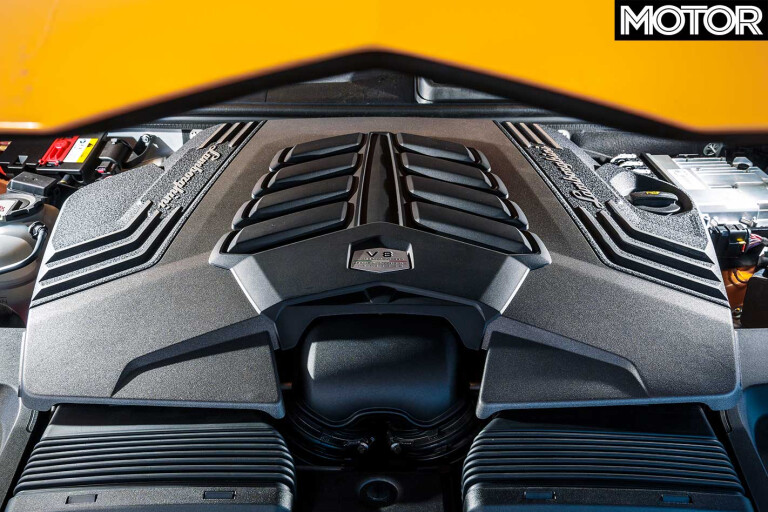
The 4.0-litre twin-turbo V8 is familiar from the Porsche Panamera Turbo/Porsche Cayenne Turbo/Bentley Bentayga V8 but in the Urus it’s at its most powerful (478kW/850Nm) and by far its most ferocious.
Lamborghini trades on its retention of naturally aspirated power for its supercars but the Urus proves a turbocharged Bull is nothing to fear – the prospect of this engine in a Huracan is a fearsome one.
Even in Strada mode it snarls and selecting Corsa seems to delete the mufflers completely, full-throttle upshifts becoming as conspicuous as the colour scheme. The sprint to 100km/h is claimed to take 3.6sec, 200km/h is reached in 12.8sec (0.7sec slower than the new 992 911) and top speed is a whopping 305km/h.
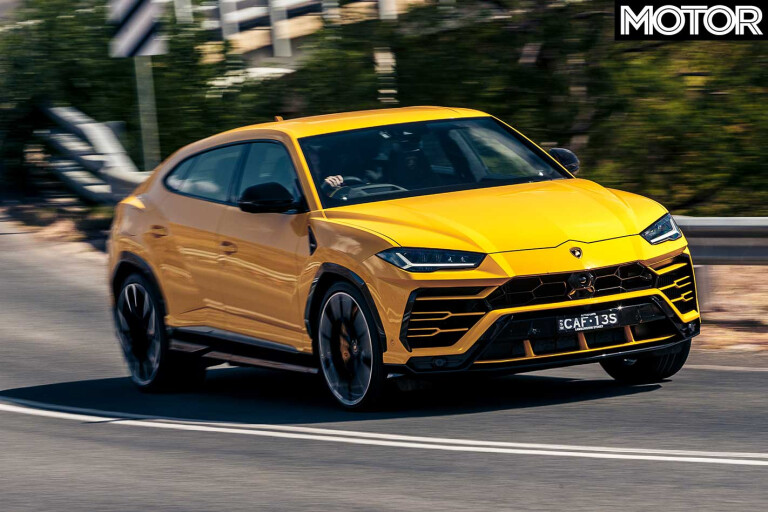
More important than the numbers, though, is the sensation; the powertrain is incredibly aggressive, yet the suppleness of the chassis allows Sport to be used as the default mode without the need to resort to Ego.
The Lamborghini Urus will not be for everyone. With an as-tested price of $463,701 that’s stating the obvious, but even those with the means are likely to be divided.
It’s brash and ostentatious, an automotive extrovert, but the subtlety of the suspension, its ability to comfort occupants rather than pummel them with ‘sportiness’, makes the Urus a purchase that can be made with the head as well as the heart. Or the ego. Whatever your opinion of it, the next-generation Aventador and Huracan will be better machines for its success.
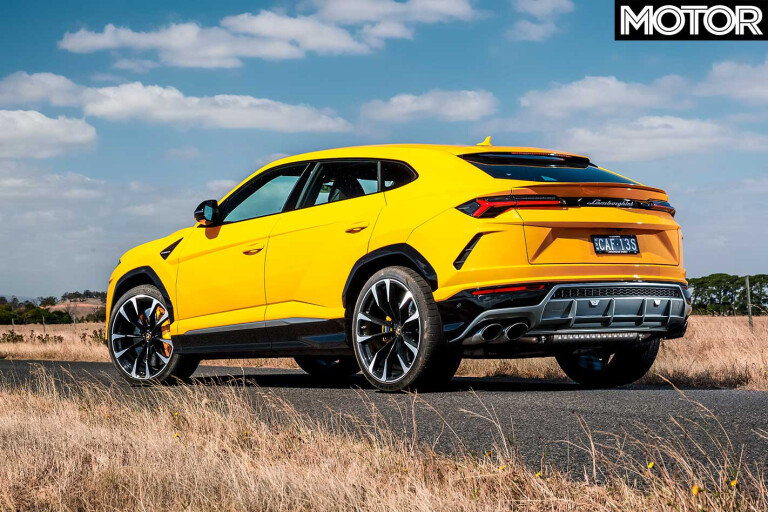
2019 LAMBORGHINI URUS SPECS
Engine: 3996cc V8, DOHC, 32v, twin-turbo
Power: 478kW @ 6000rpm
Torque: 850Nm @ 2250-4500rpm
Weight: 2200kg
0-100km/h: 3.6sec (claimed)
Price: $390,000
Like: Aggressive powertrain; ride quality; interior space; insane performance for an SUV
Dislike: Size tricky for urban living; interior appointments; image; electronic overload
Rating: 4 out of 5 stars
The Nemesis
Porsche Cayenne Turbo
4.0-litre twin-turbo V8, AWD, 404kW/770Nm, 0-100km/h 3.9sec 2175kg, $239,000

Built on the same MLBevo platform as the Urus but not as quick or as aggressive. Handles better at the limit with a nicer interior and also a couple of hundred grand cheaper.

COMMENTS